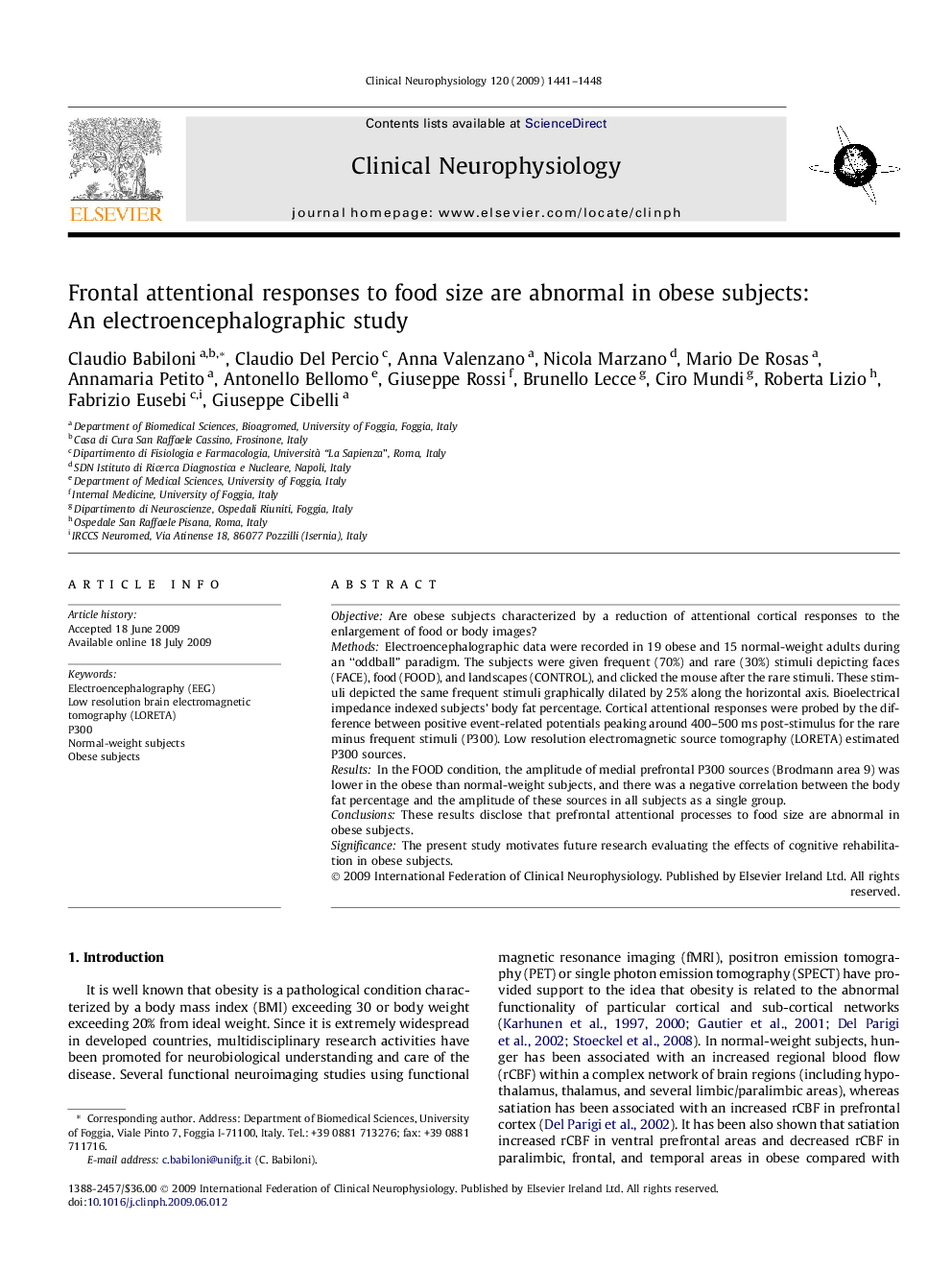| Article ID | Journal | Published Year | Pages | File Type |
|---|---|---|---|---|
| 3046270 | Clinical Neurophysiology | 2009 | 8 Pages |
ObjectiveAre obese subjects characterized by a reduction of attentional cortical responses to the enlargement of food or body images?MethodsElectroencephalographic data were recorded in 19 obese and 15 normal-weight adults during an “oddball” paradigm. The subjects were given frequent (70%) and rare (30%) stimuli depicting faces (FACE), food (FOOD), and landscapes (CONTROL), and clicked the mouse after the rare stimuli. These stimuli depicted the same frequent stimuli graphically dilated by 25% along the horizontal axis. Bioelectrical impedance indexed subjects’ body fat percentage. Cortical attentional responses were probed by the difference between positive event-related potentials peaking around 400–500 ms post-stimulus for the rare minus frequent stimuli (P300). Low resolution electromagnetic source tomography (LORETA) estimated P300 sources.ResultsIn the FOOD condition, the amplitude of medial prefrontal P300 sources (Brodmann area 9) was lower in the obese than normal-weight subjects, and there was a negative correlation between the body fat percentage and the amplitude of these sources in all subjects as a single group.ConclusionsThese results disclose that prefrontal attentional processes to food size are abnormal in obese subjects.SignificanceThe present study motivates future research evaluating the effects of cognitive rehabilitation in obese subjects.
